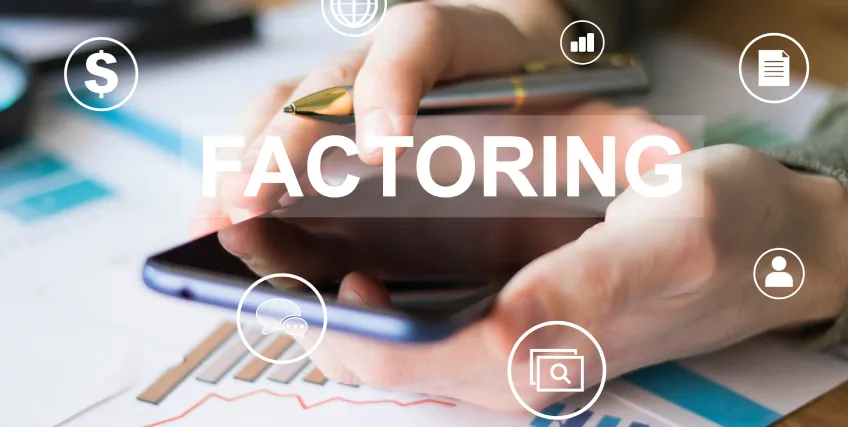What Is Invoice Financing and How Does It Work?
Jul 3, 2025 | Last Updated on: Jul 7, 2025

Small businesses often deal with irregular cash flow, especially when they get paid by customers through invoices. In these business models, you provide a service, invoice customers, and must wait until they pay to get that working capital into your company. However, your payment terms may give your customers 30, 60, or even 90 days to pay their invoices, which means you have to find a way to cover your other business expenses in the meantime.
Small business invoice financing can be a valuable solution to turn your accounts receivable and unpaid invoices into cash. It’s typically much faster than traditional bank loans and can be a good alternative financing option for businesses that can’t qualify for credit lines.
In this article:
- Learn how invoice financing and invoice factoring work.
- Understand how to get invoice funding.
- Explore alternatives to invoice finance for small businesses that can help your business thrive.
What is Invoice Financing?
Small business invoice financing, also known as accounts receivable financing, is a type of business financing that allows businesses to receive a cash advance using their unpaid invoices as collateral. Effectively, small business owners use invoices as collateral to secure a loan or line of credit from a lender or third party. Like other types of small business financing, you can use this money for virtually any operating expense, from paying staff to investing in tools to improve customer relationships.
Because the invoices themselves serve as collateral, small business invoice financing has a much more streamlined application process and less strict eligibility requirements than traditional loans. Lenders simply charge businesses a fee as a percentage of the invoice amount. You remain responsible for collecting the value of the invoice and using the payment to settle the debt.
Small business invoice financing can be an excellent option for business owners with bad credit who struggle to get other types of business credit, like small business loans.
How Does Small Business Invoice Financing Work?
Small business invoice financing is a type of short-term borrowing. Essentially, when you realize your business has costs that you may struggle to meet before invoice payments come due, you need a cash advance. Both traditional and online lenders offer invoice financing, usually charging a percentage of your unpaid invoice amount plus interest. You may also explore invoice financing companies that could assess fees in different ways, but often offer flat advance rates based on the invoice value.
In either case, the process is more or less the same. You’ll apply with the lender, show proof of your unpaid invoices, and once approved, get a lump sum deposited into your bank account minus any upfront fees. Once you receive the invoice payment, you can repay the loan.
Invoice Financing vs. Invoice Factoring
You may have also heard of invoice factoring, which is another type of invoice funding. This type of financing is very similar to small business invoice financing except for a few key differences. Both are funding options that allow you to turn unpaid invoices into cash now. Both may have higher fees than traditional loan options.
The biggest difference between small business invoice financing and invoice factoring is who retains control over the invoice. In financing, you remain responsible for collecting the invoice and paying off the loan with the remaining balance of the invoice after fees. With factoring, you sell your invoice to a factoring company at a discount based on a factoring agreement. As part of the factoring services, the company then assumes responsibility for collecting the invoice from your customer.
How Invoice Financing is Structured
Invoice financing can be structured in a number of ways, most commonly via factoring or discounting. With invoice factoring, the company sells its outstanding invoices to a lender, who might pay the company 70% to 85% up front of what the invoices are ultimately worth. Assuming the lender receives full payment for the invoices, it will then remit the remaining 15% to 30% of the invoice amounts to the business, and the business will pay interest and/or fees for the service. Since the lender collects payments from the customers, the customers will be aware of this arrangement, which might reflect poorly on the business.
As an alternative, a business could use invoice discounting, which is similar to invoice factoring except that the business, not the lender, collects payments from customers, so customers are not aware of the arrangement. With invoice discounting, the lender will advance the business up to 95% of the invoice amount. When clients pay their invoices, the business repays the lender, minus a fee or interest.
Pros and Cons of Small Business Invoice Financing
Like any type of business financing, small business invoice financing has both advantages and disadvantages.
Pros:
- Useful for B2B companies: Most invoice-based companies serve other businesses. Invoice financing can help these types of businesses ease cash flow issues due to unpaid invoices.
- Faster funding: Since small business invoice financing has built-in collateral, it tends to be a faster financing option than other types of business loans.
- Easy to qualify: Lenders typically just need to see your customers’ payment history for approval, making small business invoice financing a much less rigid financing solution than other. You can still qualify if you’re a startup or have bad credit.
Cons
- High costs: Given the short repayment period, even low fees or interest rates are usually considerably higher than long-term loans.
- Reliance on customers: The longer it takes your customers to pay, the more you’ll pay in weekly fees. That means it’s difficult to estimate the total cost of invoice financing upfront and you’re fully reliant on your customer to come through to avoid late payments or additional fees.
- Limited access: Businesses that sell directly to consumers, like retail brands, will be much more unlikely to be able to leverage small business invoice financing.
How to Get Small Business Invoice Financing
The application process for small business invoice financing is quick. Your credit history is less important, but you will still likely have to go through a credit check. Here’s a step-by-step guide to get started:
- Evaluate your qualifications: Your personal credit score can help, but it’s even more important that you have creditworthy customers. Knowing the creditworthiness and reputation of your customers can help expedite the underwriting process. You should also consider how your business finances and time in business may impact the factor rates you receive.
- Compare lenders: Banks are less likely to provide small business invoice financing than online lenders and fintech companies. Qualification requirements vary, but typically, you’ll have to meet annual revenue, time in business, and credit score requirements. Always consider factors like maximum loan amount, factor rates, funding speed, lender reputation, and customer support.
- Apply: When you’re ready, gather basic business information, business bank statements, business and personal tax returns, business financial statements, the invoices you’d like to finance, and agree to a credit check for personal and business credit scores. Lenders typically process applications quickly and can give approval in a matter of days.
Final Thoughts
Small business invoice financing is a useful funding option for business owners with bad credit or businesses that need a fast influx of capital due to unpaid invoices. The application process tends to be fairly straightforward, fast, and can help your business manage cash flow issues. That said, always take the time to compare lenders and rates as invoice financing can be very expensive. It’s better to borrow against the invoices of reliable customers who have a long track record of paying on time.
FAQs About Small Business Invoice Financing
Should I use invoice financing?
Invoice financing can be a good idea when you need to fill cash flow gaps and you have outstanding invoices from reliable customers. However, the costs can be significant, so make sure you can afford to ultimately receive a smaller amount of the actual unpaid invoice.
Is it easy to get invoice financing?
Compared to traditional financing, small business invoice financing is much easier to get. The invoices themselves serve as collateral, making you a less risky borrower to lenders.
How much does small business invoice financing cost?
Compared to other funding options, the invoice financing and factoring costs are high. Typically, with small business invoice financing, you’ll have to pay both a processing fee and a weekly factor fee. Together, they can result in significant long-term costs.
What is the difference between invoice financing and factoring?
Both are means of invoice finance for small businesses, but while invoice financing is more like a classic lending relationship, in invoice factoring a third party actually buys the invoice and assumes the responsibility for collecting the funds.
What are the risks of invoice financing?
Some common risks of small business invoice financing include hidden fees from the financing company, customers being uncomfortable with their invoices being financed, and high factor fee assessment frequencies that can rapidly increase the total cost of borrowing.
Frequent searches leading to this page
Related Articles
What is Factoring? Definition and Benefits of Factoring for Small Businesses
September 5, 2025
Term Loans are made by Itria Ventures LLC or Cross River Bank, Member FDIC. This is not a deposit product. California residents: Itria Ventures LLC is licensed by the Department of Financial Protection and Innovation. Loans are made or arranged pursuant to California Financing Law License # 60DBO-35839




